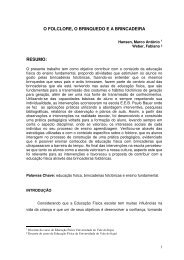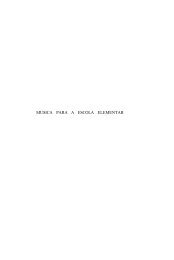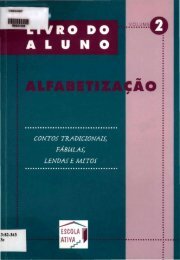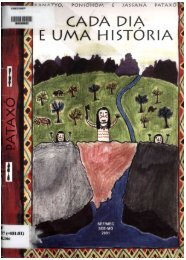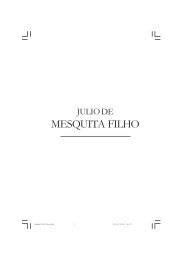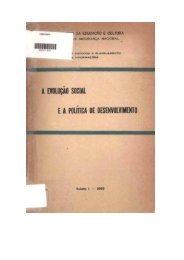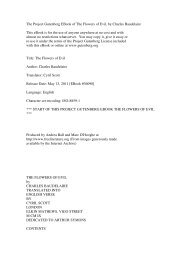A History of English Literature
A History of English Literature
A History of English Literature
Create successful ePaper yourself
Turn your PDF publications into a flip-book with our unique Google optimized e-Paper software.
nation became afraid <strong>of</strong> another civil war, and the king was enabled to have<br />
Shaftesbury arrested on the charge <strong>of</strong> treason. Hereupon Dryden, at the<br />
suggestion, it is said, <strong>of</strong> the king, and with the purpose <strong>of</strong> securing<br />
Shaftesbury's conviction, put forth the First Part <strong>of</strong> 'Absalom and<br />
Achitophel,' a masterly satire <strong>of</strong> Shaftesbury, Monmouth, and their<br />
associates in the allegorical disguise <strong>of</strong> the (somewhat altered) Biblical<br />
story <strong>of</strong> David and Absalom. [Footnote: The subsequent history <strong>of</strong> the affair<br />
was as follows: Shaftesbury was acquitted by the jury, and his enthusiastic<br />
friends struck a medal in his honor, which drew from Dryden a short and<br />
less important satire, 'The Medal.' To this in turn a minor poet named<br />
Shadwell replied, and Dryden retorted with 'Mac Flecknoe.' The name means<br />
'Son <strong>of</strong> Flecknoe,' and Dryden represented Shadwell as having inherited the<br />
stupidity <strong>of</strong> an obscure Irish rimester named Flecknoe, recently deceased.<br />
The piece is interesting chiefly because it suggested Pope's 'Dunciad.'<br />
Now, in 1682, the political tide again turned against Shaftesbury, and he<br />
fled from England. His death followed shortly, but meanwhile appeared the<br />
Second Part <strong>of</strong> 'Absalom and Achitophel,' chiefly a commonplace production<br />
written by Nahum Tate (joint author <strong>of</strong> Tate and Brady's paraphrase <strong>of</strong> the<br />
Psalms into <strong>English</strong> hymn-form), but with some passages by Dryden.]<br />
In 1685 Charles died and James succeeded him. At about the same time Dryden<br />
became a Catholic, a change which laid him open to the suspicion <strong>of</strong><br />
truckling for royal favor, though in fact he had nothing to gain by it and<br />
its chief effect was to identify him with a highly unpopular minority. He<br />
had already, in 1682, written a didactic poem, 'Religio Laici' (A Layman's<br />
Religion), in which he set forth his reasons for adhering to the <strong>English</strong><br />
Church. Now, in 1687, he published the much longer allegorical 'Hind and<br />
the Panther,' a defense <strong>of</strong> the Catholic Church and an attack on the <strong>English</strong><br />
Church and the Dissenters. The next year, King James was driven from the<br />
throne, his daughter Mary and her husband, William, Prince <strong>of</strong> Orange,<br />
succeeded him, and the supremacy <strong>of</strong> the Church <strong>of</strong> England was again<br />
assured. Dryden remained constant to Catholicism and his refusal to take<br />
the oath <strong>of</strong> allegiance to the new rulers cost him all his public <strong>of</strong>fices<br />
and reduced him for the rest <strong>of</strong> his life to comparative poverty. He had the<br />
further mortification <strong>of</strong> seeing the very Shadwell whom he had so<br />
unsparingly ridiculed replace him as poet laureate. These reverses,<br />
however, he met with his characteristic manly fortitude, and <strong>of</strong> his<br />
position as the acknowledged head <strong>of</strong> <strong>English</strong> letters he could not be<br />
deprived; his chair at 'Will's' c<strong>of</strong>fee-house was the throne <strong>of</strong> an<br />
unquestioned monarch. His industry, also, stimulated by necessity, was<br />
unabated to the end. Among other work he continued, in accordance with the<br />
taste <strong>of</strong> the age, to make verse translations from the chief Latin poets,<br />
and in 1697 he brought out a version <strong>of</strong> all the poems <strong>of</strong> Vergil. He died in<br />
1700, and his death may conveniently be taken, with substantial accuracy,<br />
as marking the end <strong>of</strong> the Restoration period.<br />
Variety, fluency, and not ungraceful strength are perhaps the chief<br />
qualities <strong>of</strong> Dryden's work, displayed alike in his verse and in his prose.<br />
Since he was primarily a poet it is natural to speak first <strong>of</strong> his verse;<br />
and we must begin with a glance at the history <strong>of</strong> the rimed pentameter<br />
couplet, which he carried to the highest point <strong>of</strong> effectiveness thus far<br />
attained. This form had been introduced into <strong>English</strong>, probably from French,<br />
by Chaucer, who used it in many thousand lines <strong>of</strong> the 'Canterbury Tales.'<br />
It was employed to some extent by the Elizabethans, especially in scattered<br />
passages <strong>of</strong> their dramas, and in some poems <strong>of</strong> the early seventeenth<br />
century. Up to that time it generally had a free form, with frequent<br />
'running-on' <strong>of</strong> the sense from one line to the next and marked irregularity<br />
<strong>of</strong> pauses. The process <strong>of</strong> developing it into the representative<br />
pseudo-classical measure <strong>of</strong> Dryden and Pope consisted in making the lines,





